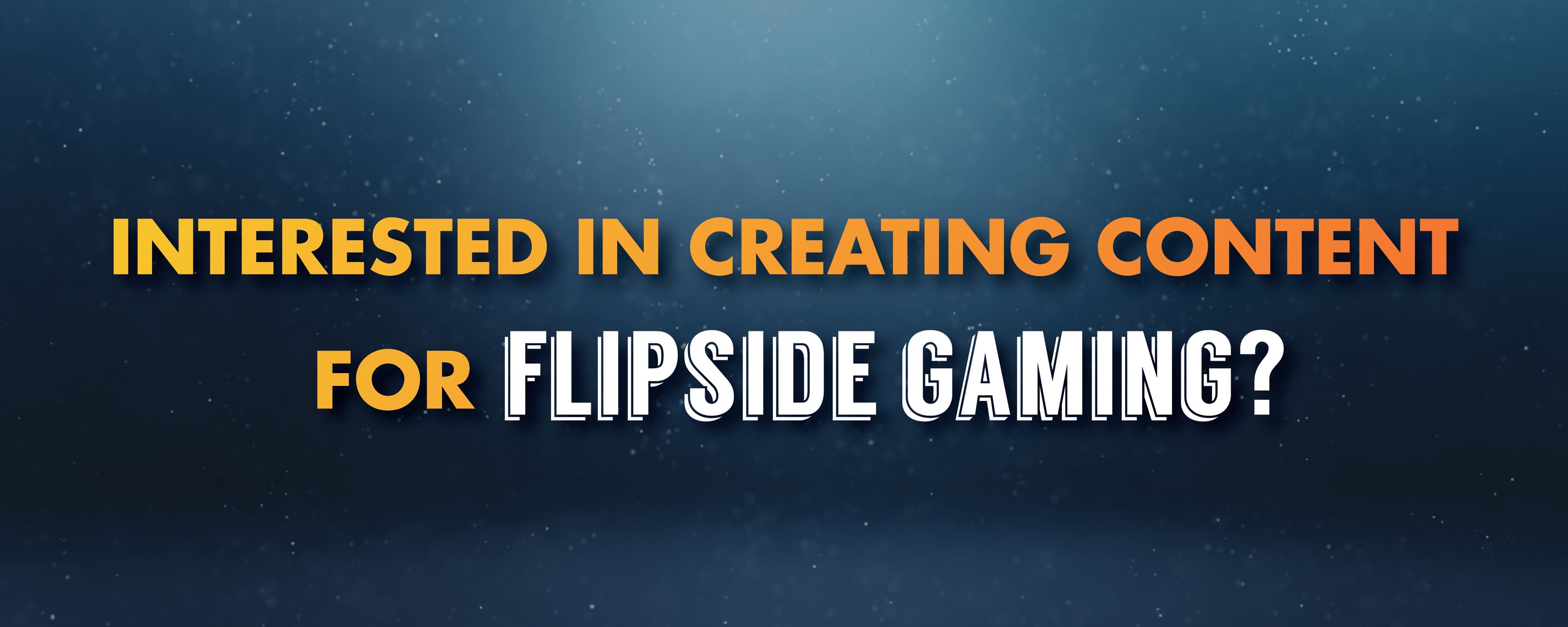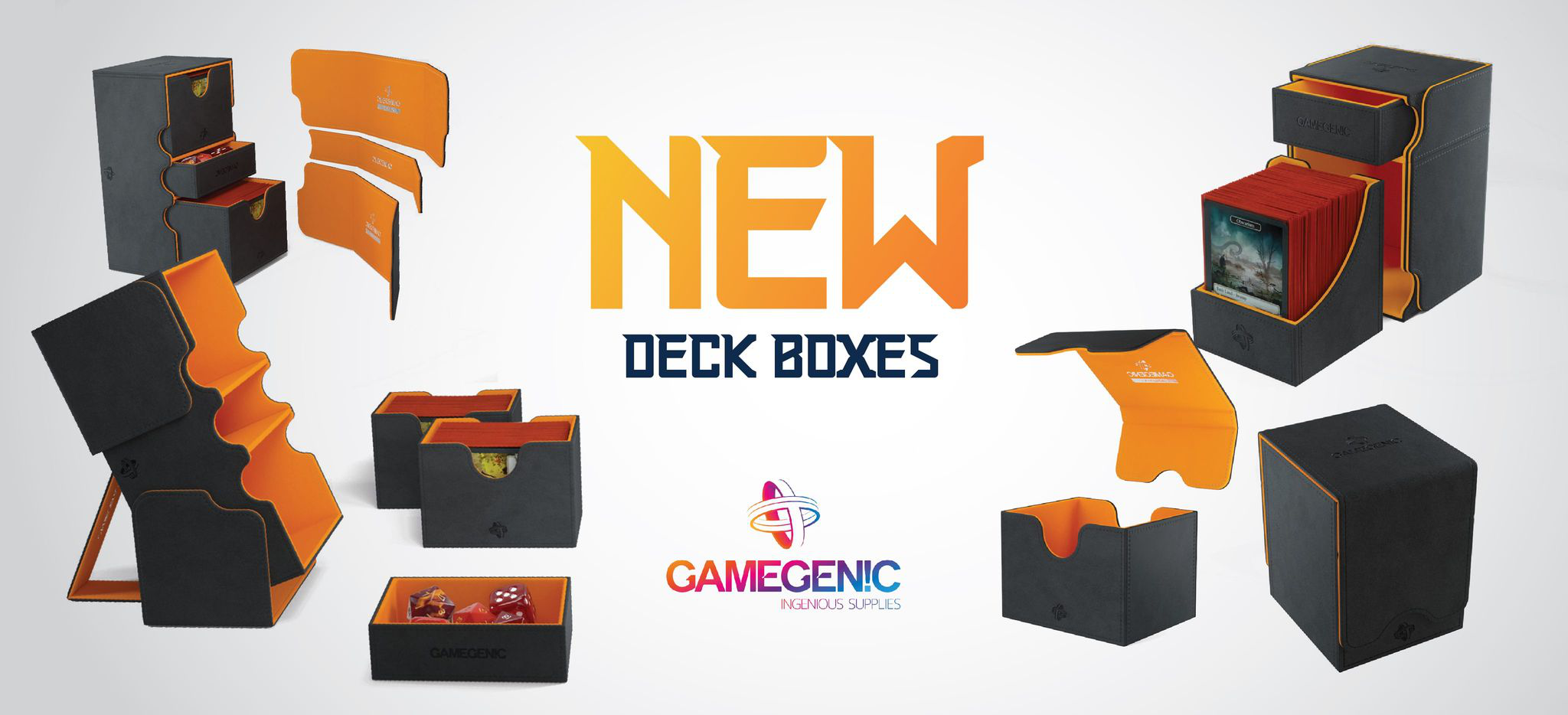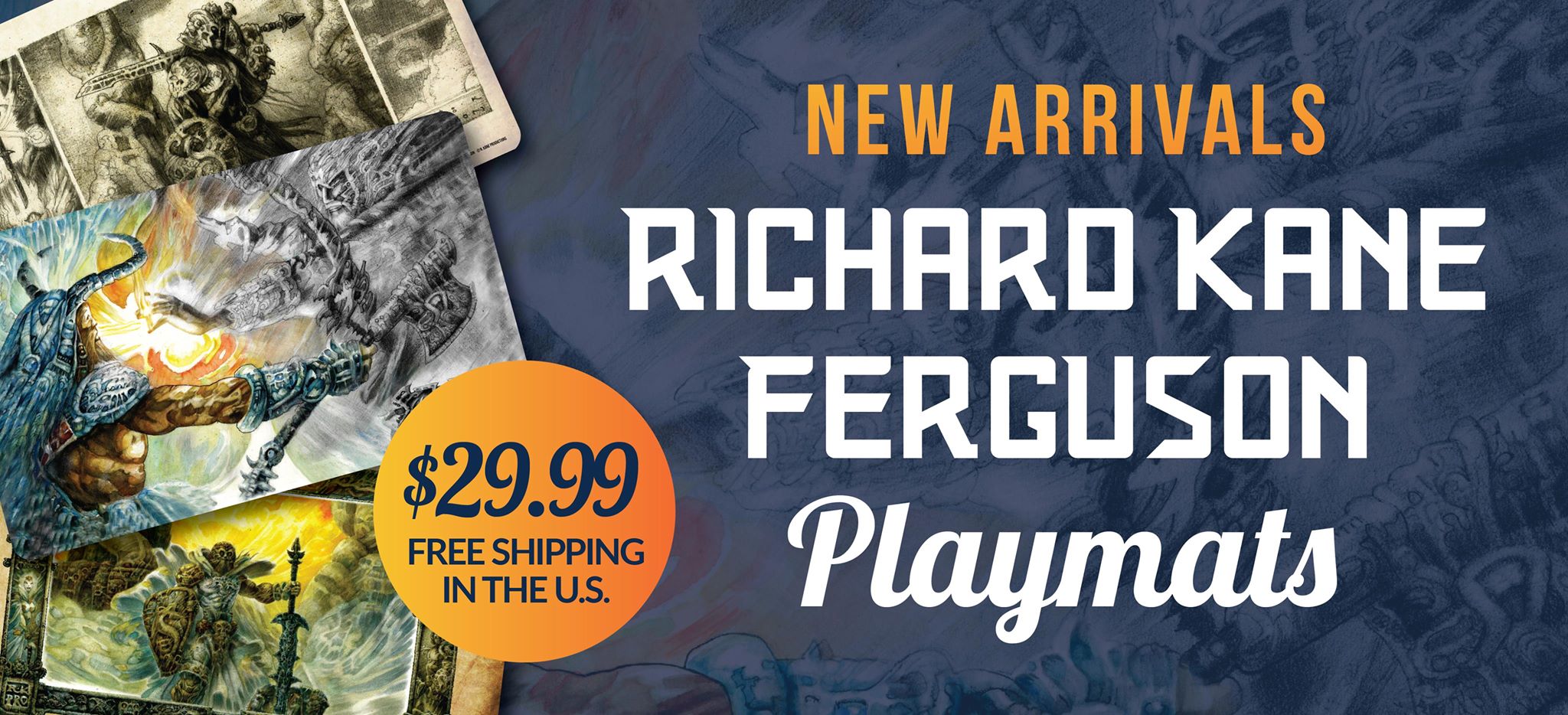Affinity

Synopsis
Affinity is a deck that has repeatedly proven that it can withstand the tests of time in modern. It utilizes cheap, evasive artifact creatures and fast mana to enable powerful threats such as Cranial Plating and Arcbound Ravager. In addition to the raw power of the deck, it also packs a lot of hard to answer threats in the form of two playsets of manlands in the form of Blinkmoth Nexus and Inkmoth Nexus, as well as Etched Champion, which in most matchups functions similarly to True-Name Nemesis in legacy. Add in the most cost-efficient burn spell in modern in Galvanic Blast, a manabase that can reliably support a sideboard containing the most powerful options in all 5 colors, plus four copies of a five color Mox, and you get one of the most aggressive yet resilient decks in modern.
Support Cards
Despite playing few to no cards of the namesake mechanic, Affinity is still heavily reliant on a critical mass of artifacts to function. All of the deck’s best draws involve playing out a majority of your hand on the first turns of the game to generate an early advantage.

To facilitate this, the deck plays a core package of cheap artifacts. 4 Mox Opal, 4 Ornithopter, and 2 to 4 other nonland 0 drops in some combination of Memnite and Welding Jar. Mox Opal needs little explanation; free, repeatable fast mana is simply one of the most powerful things in Modern. Ornithopter is the other 0 drop 4-of of choice due to its evasion. Memnite and Welding Jar round out the deck’s free plays. Memnite is less powerful than Ornithopter in most matchups due to how easily it can be blocked, but it provides a body to wear a Cranial Plating or Arcbound Ravager counters as well as enable Springleaf Drum to tap for mana. Welding Jar protects your key threats, but at the cost of being slightly less synergistic.

One drops make up the rest of the nonland enablers. Signal Pest and Vault Skirge (which isn’t technically a 1 drop but is almost always cast for 1 mana) continue the theme of cheap, hard to block artifact creatures. Signal Pest is often one of the weakest cards in the deck, but makes up for that in creature heavy draws where it can function as a pseudo-enabler by adding lots of extra damage to attacks. Vault Skirge is another evasive threat with the upside of occasionally wearing a plating or ravager counters to make it very difficult for opponents to race. Hope of Ghirapur is one of the newest pieces of Affinity technology that most commonly replaces the 4th copy of Vault Skirge. Only one can be played reliably due to it being legendary, but it’s ability is extremely powerful versus sorcery-based combo decks and control decks with sorcery speed sweepers. At worst, it’s ability can be used before casting a Steel Overseer to guarantee that you’ll be able to untap and activate it at least once. Springleaf Drum often comes down effectively for free due to its ability to immediately tap along with a creature to generate back the mana spent on it, and ramps and color fixes on subsequent turns.


Thoughtcast and Glint-Nest Crane round out the setup cards, sacrificing raw power for card advantage that can be vital in certain matchups. Thoughtcast is better in matchups where you are just looking for a critical mass of artifacts to power up your payoff cards, whereas the bird is better in matchups where most of your payoffs are getting answered as it digs you deeper to find another.
Core Cards

While the setup cards are sometimes capable of winning games by themselves, the real reason to play Affinity is the amount of powerful payoff cards the archetype provides.Cranial Plating is probably the most objectively powerful of the the deck’s finishers. It is a hard to interact with, and turns every creature on your board into a serious threat. The ability to equip at instant speed makes interacting with even instant speed removal in combat a nightmare, since the equipment can just be moved to another attacker. It’s often correct to have your situationally weakest creature wear the Plating when they are representing interaction, such as an Ornithopter instead of a Vault Skirge versus Burn, as this can force your opponent use that interaction on the weaker creature.

Arcbound Ravager fills several different roles depending on the boardstate and matchup. Often it is a lightning rod for removal because targeting anything else with a Ravager in play can just result in the Ravager “eating” that target for an additional counter. Ravager is one of the most complicated cards in Affinity, as determining when to go all in on a creature or how many artifacts to leave around to rebuild are very difficult questions to answer.


Steel Overseer provides an incredible effect in the scenarios where you can manage to untap with it. Don’t forget to activate your manlands before the ability resolves, even if they are summoning sick or unable to attack for some other reason. While it rarely comes up, Steel Overseer has another powerful ability that is often overlooked - it can attack! In the rare scenarios where your opponent has multiple blockers for your evasive threats or you have fewer creatures than Steel Overseer’s power, sending the Overseer to the red zone can be a winning play. Master of Etherium plays a somewhat similar role to Steel Overseer by pumping your team, but it does so immediately and provides an offensive body by itself as well.

Etched Champion is often either the best or worst card in your deck depending on the matchup. Against most of the decks in Modern it functions as a True-Name Nemesis; however, in other matchups it’s simply a three mana 2/2, which is why the four copies are almost always distributed between the main deck and sideboard.

Galvanic Blast provides multiple roles the deck is interested in. It can be used to finish off an opponent on the verge of stabilizing, disrupt opposing combo creatures such as Devoted Druid or Baral, or take out a powerful disruptive threat such as Liliana, the Last Hope before it’s able to do too much damage to your boardstate.
Mana Base


Affinity’s manabase is one of the most powerful in modern. It gets to play up to four copies of two powerful manlands that perfectly fit the deck’s theme in Inkmoth Nexus and Blinkmoth Nexus. Blinkmoth Nexus functions similar to the other evasive threats in the deck with the added ability to pump other manlands. Inkmoth Nexus facilitates most of your turn 3 kills and is one of the more powerful threats by itself due to only needing to deal 10 damage, but is very vulnerable to removal since you only have four sources of poison counters in the deck. Darksteel Citadel is a seemingly innocuous land that helps power out most of the decks most explosive draws due to it being a free artifact to pair with Mox Opal on the first turn to turn on Metalcraft. Glimmervoid and the more recent addition of Spire of Industry provide more of the mana fixing that Affinity thrives off of. Unfortunately, due to the nature of Modern, playing a basic land is almost always necessary due to the presence of Path to Exile, Field of Ruin, and Ghost Quarter, although which land to play is often dependent on the exact configuration of your main deck.
Good Matchups
Affinity is at its best against the other creature based decks in modern. Humans, Hollow One, Eldrazi variants, and especially Merfolk are all at a disadvantage versus the artifacts. Affinity presents threats more quickly, efficiently, and consistently than these decks. Additionally, the evasive nature of our threats mean that the Affinity player is frequently the only player with the option to block. Burn is another favorable matchup. Although the games can be very tricky to navigate on both sides, Affinity presents a slightly faster clock goldfishing as well as several threats that burn must answer, such as Vault Skirge and Steel Overseer. Usually if they have to spend a “non-searing” (Blaze or Blood) burn spell on a creature and haven’t gotten too much creature damage in, they won’t have enough resources to win the game in time. In general, Affinity is usually happy sitting across from decks that are trying to play a fair game of magic and win with ground creatures, although with its sheer aggression and manabase that can support almost any sideboard card it can be built to have game against almost anything.
Bad Matchups


There are several classes of strategies in modern that Affinity is naturally weak against. The first is combo decks that are either faster or contain enough disruption to hamper Affinity until they can go off. Scapeshift and Storm are good examples of these; Scapeshift often packs Lightning Bolt and three mana sweepers in the form of Sweltering Sun or Slagstorm that give the deck just enough time to assemble a lethal Primeval Titan or Scapeshift. Storm is an even worse matchup, as it can fairly reliably combo off on turn 3 and its main deck win condition Grapeshot is very good a removing turns from Affinity's clock on turns where they don't have the fast win.


The other class of decks Affinity has the most trouble with are control decks. Decks like Jeskai and Blue White control that have cheap, instant speed creature interaction that also have main deck answers to Etched Champion and Cranial Plating through either counterspells, enchantment-based removal, or sweepers. Tron is also starting to fall into this category as it starts playing more Walking Ballista to act as removal early and a sweeper late.


Affinity's worst matchup in modern is Black White tokens, a deck that runs multiple ways to produce multiple flying blockers, sweepers, removal, and lifegain. Other than that, there are some main deckable cards that are very powerful against affinity like Kolaghan's Command, Walking Ballista, and Lingering Souls, but those cards by themselves aren't usually enough to swing matchups too far out of Affinity's favor.
Sideboarding
Sideboarding with Affinity is complicated. Due to the synergistic nature of the deck, there is a constant danger of over-sideboarding and it’s often correct to make minimal changes to avoid reducing consistency. Although it can be appealing to cut weaker cards like Memnites, the deck is heavily reliant on having at least 6 non-opal zero drops in most matchups in order to function. The deck has access to all five colors of mana and thus almost all of the most powerful sideboard options in modern, however due to the deck usually running only 12 sources of multi-colored mana in almost every matchup you don’t want to have more than 8 colored spells in the deck post-board.
It’s also very important to respect what hate cards your opponents are bringing to the table. For example, against decks that are very likely to have Stony Silence, it’s vital to have a plan. That plan can range depending on the matchup from reactive cards like Wear // Tear and Thoughtseize, proactive threats like Ghirapur Aether-Grid and Bitterblossom, or just hoping they don’t draw it. A non-exhaustive list of sideboard cards to be aware of is: Stony Silence, Kataki, Ancient Grudge, Wear // Tear, Fracturing Gust, Shatterstorm, Shattering Spree, Vandalblast, Anger of the Gods, Flaying Tendrils, Kozilek’s Return, Sudden Shock, Ceremonious Rejection, Pithing Needle, Izzet Staticaster, Engineered Explosives, and Hurkyl’s Recall. Knowing what decks play which cards is key to being able to navigate sideboarded games.
Here are some general rules of thumb to abide by while sideboarding. Note that because of the wide variety of sideboard cards affinity can play, I’ll focus mostly on what I take out in certain matchups.
- It’s rarely correct to play fewer than 6 non-Opal 0 drops
- Don’t cut any multi-colored mana producers unless there are fewer than 6 colored spells
- Against decks with fliers other than Birds of Paradise, take out Signal Pest since it is too easily blocked.
- Against decks that play lots of creatures that can block on the ground, shave on Memnites since it is easily blocked.
- Against decks with no creatures, shave on Ornithopters since Memnite won’t be blocked
- Cut Etched Champions against decks with lots of colorless interaction (and be aware of Kozilek’s Return!)
- It can be correct to cut the basic against grindy decks that aren’t playing Path to Exile, especially on the draw
- Shave on Galvanic Blast against almost any matchup that doesn’t combo with creatures, and don’t be afraid to cut them all against decks like Jeskai
- Modular doesn’t trigger with Rest in Peace in play, so it can be correct to shave Arcbound Ravagers in some matchups that Rest in Peace comes in.
- Be aware of your curve and don’t put too many 3 drops in the deck at the expense of 0 and 1 drops
- Steel Overseer and Welding Jar are among the weakest cards against opposing Stony Silences
- Don’t board too much in fear of Stony Silence. For example, I’ll rarely bring in enchantment removal against a deck that only has Stony Silence as a target.
Affinity isn’t a deck that mulligans particularly well, but without a payoff card it is very difficult to win. Therefore, it’s usually correct to mulligan any hand that doesn’t have at least one powerful two or three drop, although exceptions can be made with creature heavy draws with multiple Signal Pests. A good question to ask yourself when considering a hand is what it’s missing that it needs to win the game around turn 4 uninterrupted, and to mulligan if it seems unlikely to find those pieces.
Tips
As far as gameplay, there are many things to keep in mind with Affinity. When sequencing Springleaf Drum and creatures, if you’re casting one before the other it’s usually safer to cast the drum first so that your opponent can’t deny you mana by removing your creature with the drum on the stack. In most scenarios where you already have a payoff card in play, it’s better to cast your artifact spells pre-combat since they all benefit by having more artifacts out. On the other hand, if you don’t already have a payoff card out it can be better to play them post combat to try and draw removal on a weaker threat. Steel Overseer is usually a very good “test spell”, meaning that if it survives to your next turn your opponent very likely has no removal. Similarly, putting an Arcbound Ravager on the stack heavily incentivises your opponent to use any removal spells they don’t want to hit the ravager with before it resolves, so use that information to your advantage. Additionally, with enough resources, two ravagers can effectively play around damage-based targeted removal like Lightning Bolt. Sacrifice enough artifacts to the first Ravager to put the creature you’re going to put the counters on out of range of the removal spell, then sacrifice the first Ravager to the second Ravager. If your opponent responds with the spell, put enough counters on the second ravager to save the creature then sacrifice it to itself to move those counters over.
Other Variants



There are a couple alternative versions of Affinity that have had success in modern. “True” Affinity decks have had some success online relatively recently and at the GP level several years ago, playing cards with they keyword affinity such as Frogmite, Myr Enforcer, and even Scale of Chiss-Goria.


More aggressive versions of Affinity featuring Ensoul Artifact and Shrapnel Blast have also been played to varying levels of success. One version of this deck even top 8’d a GP but is viewed as less consistent than the ol' faithful build.


The most popular variant of Affinity plays Hardened Scales,more modular creatures, and potentially even Throne of Geth to further take advantage of the existing +1/+1 counter subtheme of the deck.The deck has gathered more steam after the Jace and Bloodbraid Elf unbanning but hasn't broken through into the upper echelon of Modern decks yet. Nonetheless, it is an interesting evolution and something to check out.
Future of Affinity
Affinity has been a stalwart of the Modern format since its beginning. The deck has always remained as a top teir option and will for the foreseeable future. The deck has picked up a few support cards recently and any artifact payoff card going printed will be at its best in Affinity, giving it hope for new prints. Affinity has been, is and will be a great Modern deck, unless Mox Opal gets banned, but that doesn't seem to be on the horizon.





